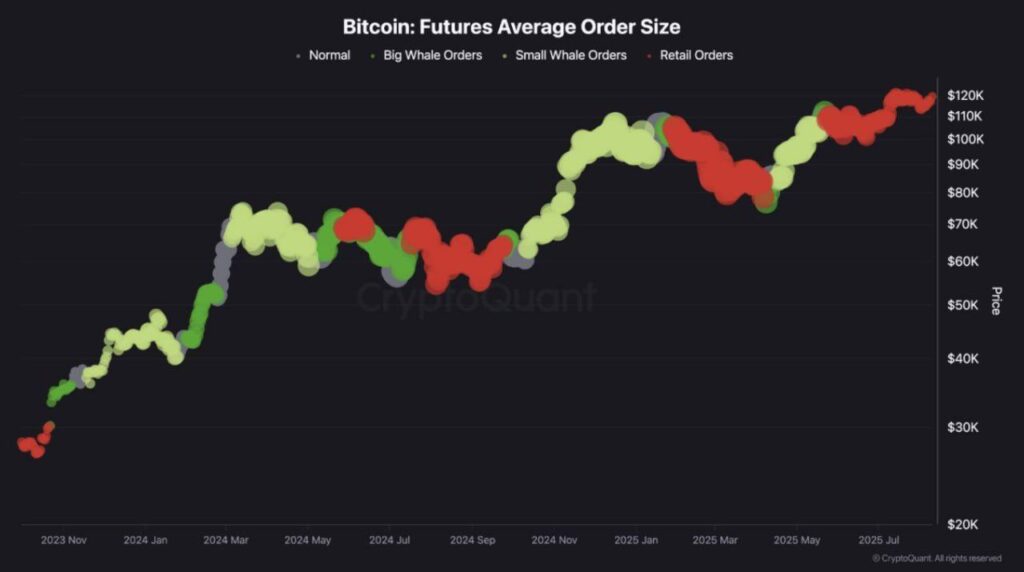The latest CryptoQuant data shows a significant surge in red clusters, a market indicator that tracks the prevalence of small, retail-sized orders in Bitcoin trading activity. This uptick suggests that retail traders are now taking a larger share of the market, a dynamic shift that could influence short-term price behavior.
Historically, prolonged dominance of whale activity near market peaks often coincided with distribution phases and local tops. The current reversal where retail orders are increasingly visible marks a notable departure from those patterns.
Retail’s Rising Role
The rise in retail participation comes as institutional players and long-term whale holders remain relatively steady. According to Ainvest, while whales still control a substantial portion of the supply, retail momentum is accelerating, contributing to short-term market volatility and potentially setting the stage for sharper price swings.
Some on-chain indicators suggest that while retail involvement is increasing, retail sentiment itself remains fragile, as highlighted by recent wallet activity data from Yellow.com. Smaller Bitcoin wallets have been declining in number, even as larger addresses typically associated with whales continue to accumulate. This divergence could mean that while some retail traders are entering aggressively, others are exiting the market.
What It Means for Bitcoin’s Price Action
The interplay between retail and whale activity is critical in determining Bitcoin’s short-term trajectory. If retail demand sustains momentum, it could help drive a near-term breakout. However, if whale distribution resumes, history suggests the market could face pressure.
Market analysts note that clusters of retail activity often align with heightened speculative interest. Whether this translates into a continuation of the current trend or a setup for profit-taking by larger holders will be closely watched in the coming weeks.

source: CryptoQuant, Ainvest, Yellow.com







